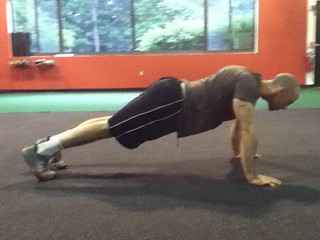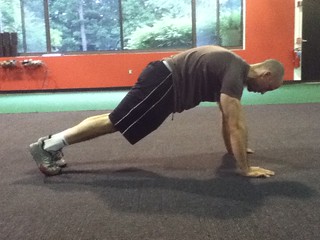Lets be clear from the start: there’s really no such thing as a “perfect” assessment. I’ve seen coaches and trainers spend as little as ten minutes assessing their clients, as well as those who take roughly the same time it would take to read the Harry Potter series, and both have been equally as successful with getting results.
Although, in the case of the latter, I’d argue that some fitness professionals spend an inordinate amount of time assessing things that don’t really matter and/or are outside their scope of practice in the first place. Big toe dorsiflexion? Really?
The person standing in front of you is 25 lbs overweight and moves about as well as a one-legged pirate. It’s not rocket science. Get them moving. End of story.
Nevertheless when it comes to assessment I’ve always lived by the mantra of “different strokes for different folks.” As an example, at Cressey Performance, we work with a metric boat load of baseball players which is a unique population with regards to the demands placed on their body. Much of what we look at with them – comparing total glenohumeral ROM between dominant and non-dominant sides, for instance – may not be relevant to someone that walks into the facility who’s just looking to get a little stronger, fix their nagging lower back pain, or not be embarrassed to take their clothes off with the lights on.
That said, how we go about assessing our athletes and clients at Cressey Performance suits our needs, our facility layout, and our business model.
Put another way: how we go about doing things isn’t to say that we’re right and everyone else is wrong; nor is it to imply that our way is the end-all-be-all of assessment; nor is it suggest that everyone should kneel before us General Zod style:
It all mounts down to what we’ve found works for us. It’s as simple as that.
However, I will say that I do (and always will) feel the push-up is an unsurpassed assessment tool that should be a staple in most assessment protocols.
Not many “tools” can give as much information and feedback to the fitness practitioner than the push-up, and it behooves anyone to dismiss it.
Did you hear me? I said it behooves you! I’m bringing back old-English people, so you know I mean business. You’re just lucky I didn’t grab a white glove, slap you across the face, and challenge you to an old-fashioned bare knuckled boxing match.
Taking actual technique out of the equation (it amazes me how many guys come in to see us with cranky shoulders, only to have some of the worst push-up technique this side of Charlize Theron in the movie Prometheus), the push-up assessment parlays very well to a variety of populations.
With our baseball guys – and even our general population clientele – it gives a good scope to see how well their scapular stabilizers (particularly the lower traps and serratus anterior) are working – if one or both are weak, the scapulae will be more anteriorly tilted and abducted (not “hugged” against the rib cage) which can result in compromised stability.
Too, and an often overlooked component, is anterior humeral glide. You can see this in someone’s standing posture very easily, but it also becomes very pronounced when you watch someone perform push-ups, or just hold the push-up position isometrically.
This can be detrimental in that if it’s not corrected or just left to it’s own vices can lead to increased anterior instability of the shoulder, which as we all know, not only kills baby seals, but also makes your shoulder hate you.
Using a more glaring and obvious anecdote, push-ups are also a fantastic assessment tool because they make it abundantly clear where someone’s weak points are. And almost always, many are going have weak lumbo-pelvic-hip control – to the point where they’ll be hanging on their lumbar spine as well as rocking a nasty forward head posture.

On the flip-side many may also demonstrate a dominant rectus abdominus pattern, which typically means their external obliques are non-existent and they probably spend way too much time in front of a computer stalking people on Facebook.

Again, in both scenarios it’s just valuable feedback for you which will dictate that person’s programming moving forward.
Another dimension of the push-up assessment that I never really thought of before – and something I stole from Mike Robertson – is the concept of ‘core delay.’
In short, instead of starting someone in the standard push-up position – away from the floor with arms fully extended – you start from the floor.
In this way you can see whether or not someone has adequate stability or if there’s a delay in firing, and the hips come up first.
The key is to make sure that whoever it is you’re testing is completely relaxed on the floor, and then you just observe and make a judgement call from there.
The first rep would be considered a “passable” rep and shows that the person (me) has good core stability. They (me) were able to keep the spine in a “neutral” position and everything seemed to fire simultaneously.
And, not to mention their (um, me) triceps were gunny as shit……;o)
With the second rep, though, there was a little wackiness, and you’ll notice how my hips shoot up first and my lumbar spine goes into immediate hyperextension. This shows a ‘core delay,’ which is just a fancy way of saying “dude needs to work on getting his glutes to fire to posteriorily tilt the pelvis more, along with the external/internal obliques and RA.”
In the end I just feel utilizing the bottoms-up push-up is another great way to evaluate clients and to better ascertain where their weaknesses lie and how their programming may manifest moving forward.
Agree? Disagree? Tell me more below.



